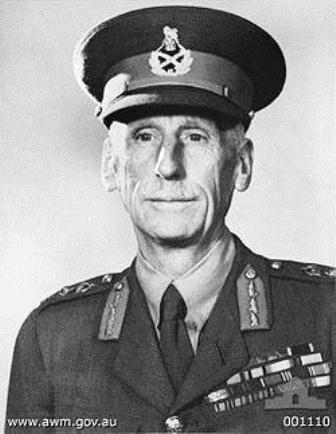08 December 1915
ANZAC - Deputy Quartermaster General Walter Campbell, Headquarters, Mediterranean Expeditionary Force - It took five long weeks from the despatch of Monro’s appreciation of the situation at Gallipoli, in which he clearly recommended evacuation, to his receipt on 8 December of the final decision of the British Cabinet taken the day before). At last a decision was made: Anzac and Suvla would be evacuated and the final date was set for 19 December.
 Photograph: The architect of the evacuation scheme Brigadier-General Cyril Brudenell White, Headquarters, ANZAC Corps
Photograph: The architect of the evacuation scheme Brigadier-General Cyril Brudenell White, Headquarters, ANZAC Corps
Even then the politicians decided, influenced by the wishes of the Royal Navy, to retain Helles to try and restrict U-Boat usage of the Straits. The real question was could the soldiers and sailors get away with it? Throughout this interregnum the MEF headquarters staff had been grafting away at their plans and making preliminary preparations ready to evacuate once they got the go ahead. Nevertheless the final sanction brought home with a stunning force the realisation of the manifold difficulties of what they were about to attempt. The Deputy Quartermaster General Walter Campbell, Headquarters, MEF summed up the problems they faced on 8 December in a subsequent letter.
"A retirement in face of an enemy on land where you have plenty of room is a very difficult and critical operation but under the circumstances here, where one is bang up against your enemy, and where you have absolutely no room to sling a cat, and also have to embark in small craft every single man, gun, animals and stores on a beach which is under the enemy’s gun-fire, and of which they know the range to an inch - and in the case of Suvla can see from their positions - you can imagine what a difficult anxious job it is. We have not only the enemy to contend with, but at any moment, practically in the twinkling of an eye, a south-west wind may spring up."
Somehow they had to evacuate from Anzac and Suvla some 83,000 men, 186 guns and as much of their equipment and stores as possible. The huge depots were gradually whittled away as the more valuable or esoteric items were re-embarked. However they were constrained in how much they could take away as there was a fear that the Turks might notice, or worse still, that a resumption of the bad weather might cause a postponement. There was therefore a necessity to keep sufficient food ashore to feed tens of thousands of men and animals.
"I expect to lose a good deal of food, as I had stocked up each place with about thirty-five days’ rations in view of the coming bad weather in January, February and March, as I calculated that during that time there might be frequent periods of about a week or 10 days when no food could be landed at all - so the accumulated stocks meant some 6,000 to 7,000 tons. Of course at such short notice it has been impossible to get all that quantity away."
The initial sets of evacuation plans were drawn up by the staff of the ANZAC and IX Corps. The original solution as drawn up by the IX Corps staff under Lieutenant-General Sir Julian Byng was to make a fighting withdrawal, falling back in stages to two pre-prepared final defensive trench systems close to the beaches on either side of the newly flooded Salt Lake before making a final break for it. This plan could not co-exist with the secrecy required at Anzac where they were already effectively in their last-ditch positions and eventually it was abandoned in favour of the plan produced by Brigadier-General Cyril Brudenell White the Chief of Staff of the ANZAC Corps. Knowing that the Turks fully capable of causing huge casualties by bombarding the beaches and launching disruptive attacks, this plan prioritised deception to try and conceal the evacuation until the very last moment. It was a brilliant piece of work that combined rigorous detailed planning with a considerable imaginative effort to ‘fool’ the Turks. Throughout the week before evacuation the units holding Anzac and Suvla would be thinned out to the bare minimum required to hold the front. Then in the final two nights the units in reserve and support would be evacuated on the first night while on the final night they would thin out the remaining units in stages, before the final parties pulled back covered by small rear-guards. Throughout every effort would be made to maintain the appearance of normality in everything they did.
SOURCE: IWM DOCS: W. Campbell, Typescript letter, 18/12/1915.
SOURCE:
See above
